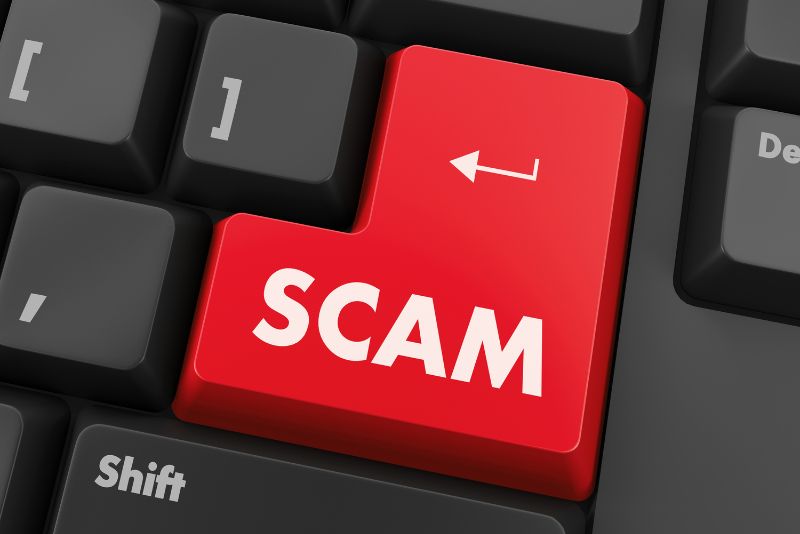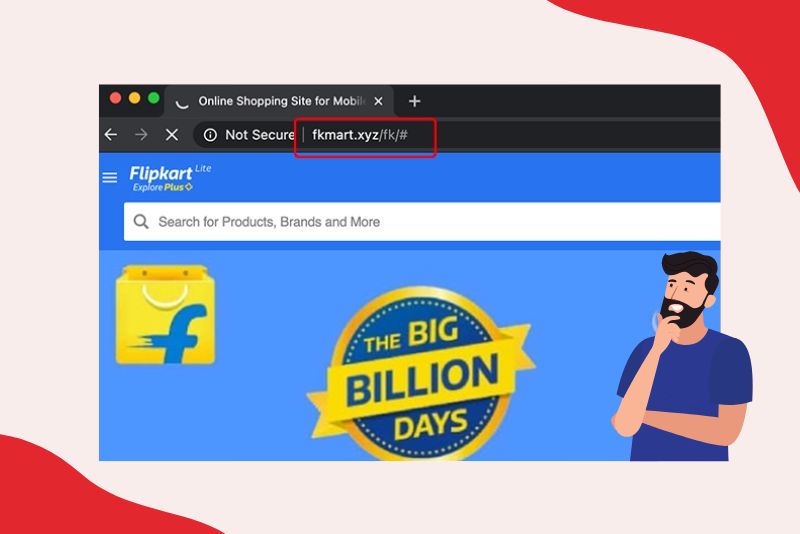
If you’re shopping online, you’ve probably already heard about the scams. The most common is a pop-up ad that appears when you’re trying to buy something and asks if you’d like to pay with a prepaid card or gift card or even UPI. You’ll quickly realize that these are fake websites, but they can be difficult to spot because they look so much like real retailers’ sites. Luckily, there are ways to protect yourself from these types of scams:
Research the product and retailer
- Look for information about the retailer.
- Check out their website, if they have one. You can find out if they have a physical store and what kind of products are sold there, or if it’s all online-only, which may be less trustworthy because it’s harder to verify the authenticity of an online seller’s claims.
- Look at reviews of other people who bought similar products from this seller (or any other). Make sure you read them carefully—you don’t want to end up buying something that wasn’t as described! If possible, ask some friends who’ve bought from this company before if they’d recommend it too; many times people will share honest feedback with others if asked politely enough. 🙂
Watch out for hidden fees
Hidden fees are those you don’t know about until it’s too late. They can be a big problem for consumers, but they’re especially common in the world of online shopping.
Many hidden fees are unavoidable—they’re built into the costs of doing business—but others may be avoidable if you’re a savvy shopper who knows how to spot them. To help make sure you don’t get taken advantage of by unscrupulous merchants looking to make money off your hard-earned dollars, here are some do’s and don’ts:
- Watch out for shipping costs! It’s not always clear whether or not there will be an additional charge on top of your purchase price when purchasing something online; in this case, it could be worth asking questions about what exactly will happen before making an impulse buy or money transfer. It may also help if you have access to one or more other items that can serve as backups (such as gifts), so if one item doesn’t work out well after receiving it through standard shipping methods like USPS Parcel Post/Priority Mail etc., then another option might come along without having wasted too much time waiting around trying different things first.
Must read: Local consumer protection initiative by GOI
Avoid fake websites
- Look for misspelled words.
- Check the URL (and domain) of a website to make sure it’s legitimate. If a site uses an incorrect domain, it might be trying to scam you to send money by pretending to be something else.

- Look at the website’s design and content. If there are too many ads or if they look suspiciously like pop-ups from other sites on your computer, avoid them! It’s best not to click on anything that looks suspiciously like someone else’s product page—even if you think it might be free shipping offers or coupons that could save you money in the future!
- Check contact information: Who do these people work for? What kind of business is this person associated with? How long have they been running their own company before launching this new venture into cyberspace (or wherever else they’re going)? And finally…
Beware of online shopping scams via pop-up ads
Pop-up ads are a very common type of online scam, and they can be quite annoying. They’re also used to trick you into clicking on links or installing malware.
Pop-up ads often appear when you start loading your web browser with content that doesn’t belong to you, like an affiliate link or an advertisement for something unrelated to what you’re doing at the moment (such as shopping or free credit report). When this happens, it’s likely that pop-ups will try to convince you that they’re related somehow—for example, by saying something like “This website has been blocked by your antivirus software.” They’ll usually have some sort of message about how this site is safe and trustworthy—but if anything about them rings false, go back through your history of websites visited and check out how many other people were trying to get access through their own means before proceeding further down their path towards disaster!
Try not to shop on public Wi-Fi
Public Wi-Fi is not secure. It can be hacked, and hackers are a real threat to everyone who uses public or unsecured wireless networks in their homes or on the go. This means that if you connect to a public hotspot like Starbucks, for example, your personal information could be stolen by someone else using that same connection—and there’s nothing you can do about identity theft! It’s also possible that your password could be hacked into by someone who has access to your device or even your credit card company (such as through malware).
Request a return policy in writing
- Request a return policy in writing.
- The return policy should be easy to find and easy to understand.
- It should be clear about what you can expect from the retailer, including when returns are accepted, how many days’ notice is needed before shipping will begin, and whether there are any limitations on what items may be returned (for example: if your purchase was made online using a debit card instead of in person/wire transfer).
- The online retail seller should have an easily accessible phone number or email address where questions can be answered promptly; if you call customer service by phone during business hours, please note this information so that we can provide our best possible service!
Look for logos of approval or verification
- Look for logos of approval or verification.
- Look for a seal from a reputable organization, such as an independent third party or government agency.
- Look for the retailer’s logo on their website along with their return policy and guarantee.
You may like: 9 Websites For Small Businesses You Probably Didn’t Know About
Check a website’s security
To see if a website is secure, simply locate the lock icon in the address bar. If you see this symbol of an unbroken key in place of your home page or any other page where shopping takes place, then you know that all transactions will be handled securely. However, if there’s no such icon present on any shopping sites that you visit during this process (and especially if they’re not sites related to shopping), then it’s time for extra caution: either choose another site or don’t buy anything at all!
It’s important to remember that not all websites use HTTPS encryption by default—even those with “https” in their URLs do not necessarily offer protection from scammers who might try to steal information. This is done through malware programs disguised as legitimate software downloads or links found within emails sent by acquaintances who’ve fallen victim themselves; these types of attacks have been known since long before social media platforms became popular among users worldwide.
Keep your antivirus software updated
If you’re like most people, your antivirus software is probably outdated and not protecting you from the latest threats. The best way to keep yourself safe is to make sure it’s updated as soon as possible.
It’s also important that your browser and operating system are up-to-date as well—this includes anti-malware software, browser extensions (like AdBlock), and any firewalls on your computer or device that can help block malicious websites from accessing your bank accounts.
There are many ways to protect yourself from online shopping scams, which seem to be more common every year.
There are many ways to protect yourself from online shopping scams. You can research the product and retailer, watch out for hidden fees and be wary of fake websites.
- Pop-up ads: These are usually in the form of too good to be true pop-ups or pop-unders when you’re browsing online stores, but they can also appear as a popup ad while doing other things on your phone such as reading email or watching videos. If a pop-up comes up when you’re trying to shop on Amazon rather than Facebook Messenger (or vice versa), it means that someone else has created an account under your name and used it to try their scamming techniques on unsuspecting customers like yourself!
- Fake retailer websites: Some scammers will create their own fake versions of popular retailers so that they can trick users into buying through them instead of going straight through Amazon directly.
You may also like: Spot Fake News Like A Pro
Conclusion
We hope that this guide has given you some tips on how to protect yourself from online shopping scams. We’ve covered the most common ones here, but there are many more out there and we encourage you to research your own online purchases carefully before buying anything!
















































